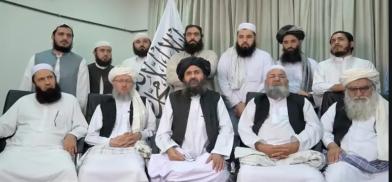Complexity, challenges involving government formation in Afghanistan
Two weeks have passed since the Taliban captured Kabul, Afghanistan is without a government, at a time when the country is staring at a grave humanitarian crisis

Two weeks have passed since the Taliban captured Kabul, Afghanistan is without a government, at a time when the country is staring at a grave humanitarian crisis. Senior Taliban leaders have been holding intense internal consultations with various faction and interest leaders to discuss the government formation. Choices made here would be the line between continued war and peace in Afghanistan-- a fact the group knows well.
Foreign Policy magazine last week reported, "The Taliban will establish a 12-man council to rule Afghanistan in the wake of US withdrawal." A report in Newsline magazine says that the Taliban is reportedly under pressure from Pakistan and Qatar to include other leaders--former President Hamid Karzai, Abdullah Abdullah other ethnic leaders of ethnic minorities --of the previous government.
Mullah Baradar, the Taliban’s political head, Sirajuddin Haqqani, the chief of the Haqqani Network, and Malluh Yaqoob, the son of the group’s founder Mullah Omar, are likely to hold important positions in the future government. Intriguingly, many leaders of the Haqqani Network, which is responsible for several gruesome attacks on US and NATO troops in Afghanistan, remain on the US’ wanted terrorist list.
Further complicating the problem for the group is the rivalry among the several competing factions within the group. The sweeping victory has reduced the leverage of the Taliban leadership to accommodate other non-Taliban leaders. If they do, the group risks its cohesion, which remains the top priority for it.
The war in Afghanistan has always had two dimensions - internal and external. The pacification of both is needed to end it. In 1994, when the Taliban had first emerged as a political force in the Afghan war theatre, it consisted of mostly Pashtuns, the largest ethnic group--around 48 percent of the total population-- in the country.
By 2001, just before the 9/11 attack, although the group was controlling almost 90 percent of the country, it remained aliens to the northern population, which was largely non Pashtuns like Tajiks, Uzbeks, and Hazaras.
However, after 20 years when the group makes a comeback to power and holds more territory than it had ever controlled in the past, there is a realization within the group to co-opt other ethnic groups for stability. Already in the last six to seven years, the group expanded its outreach to other ethnic groups like Tajik and Uzbeks, which ultimately helped it to sweep the region.
Also, there is significant pressure from other regional countries to include other important non-Taliban leaders also in the government. For instance, Tajikistan, its northern neighbor, explicitly said they will not recognize any Afghan government that is not inclusive and representative of all ethnic groups, especially Tajiks. Tajikistan, during the 90s, had played an important role in supporting the anti-Taliban resistance in the country’s north.
Pakistan, Afghanistan’s most consequential neighbor, has historically been opposed by Afghanistan’s non-Pashtuns ethnic group. However, the presence of several non-Taliban leaders, including from Tajik, Uzbek, and Hazara communities, in Pakistan in the last few weeks, indicates Islamabad's willingness to expand its outreach to these groups.
Managing the often contradictory and competing aspirations both within and outside the group will be a daunting task for the group. The failure would only result in prolonging the war that has gone on for almost 42 years now.








Post a Comment